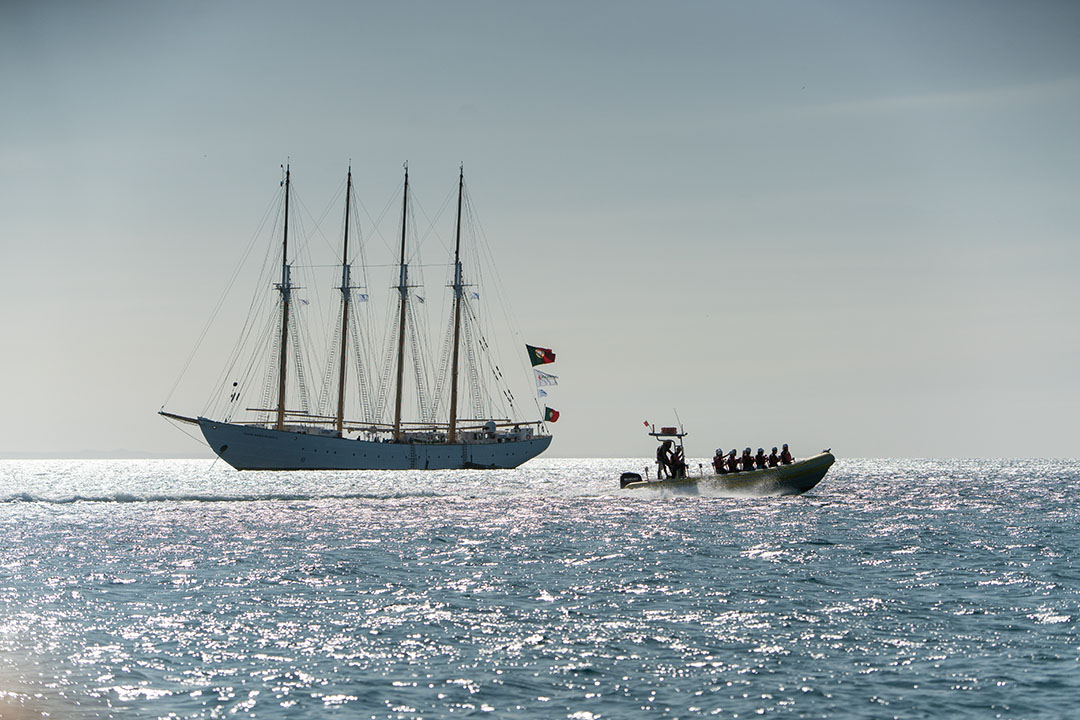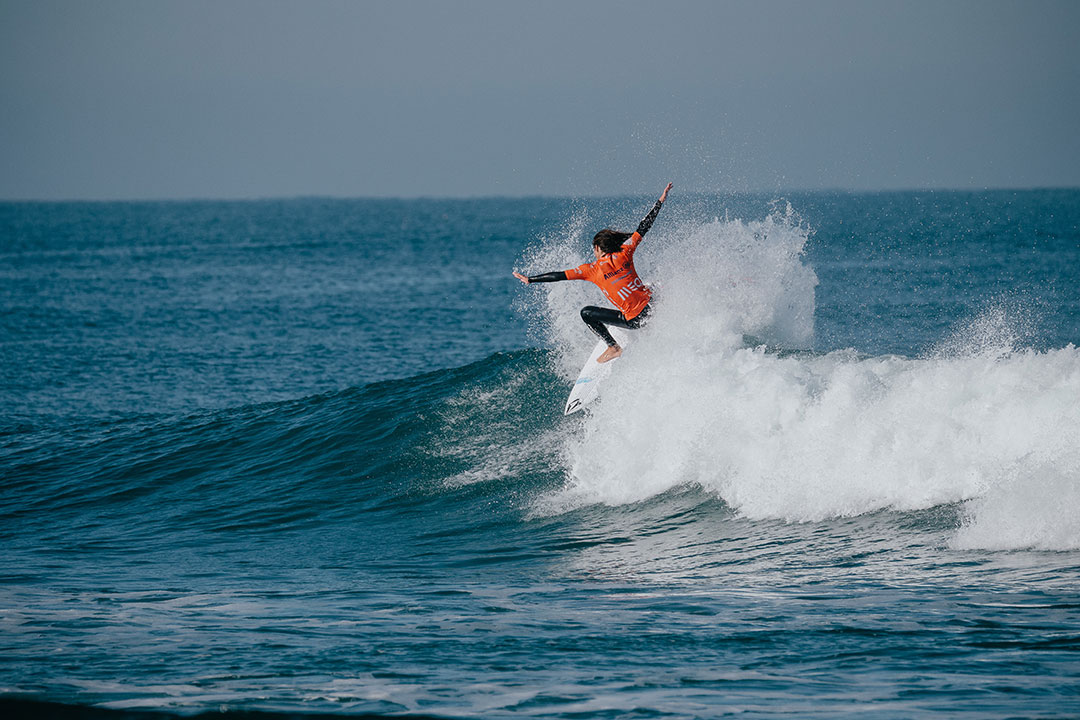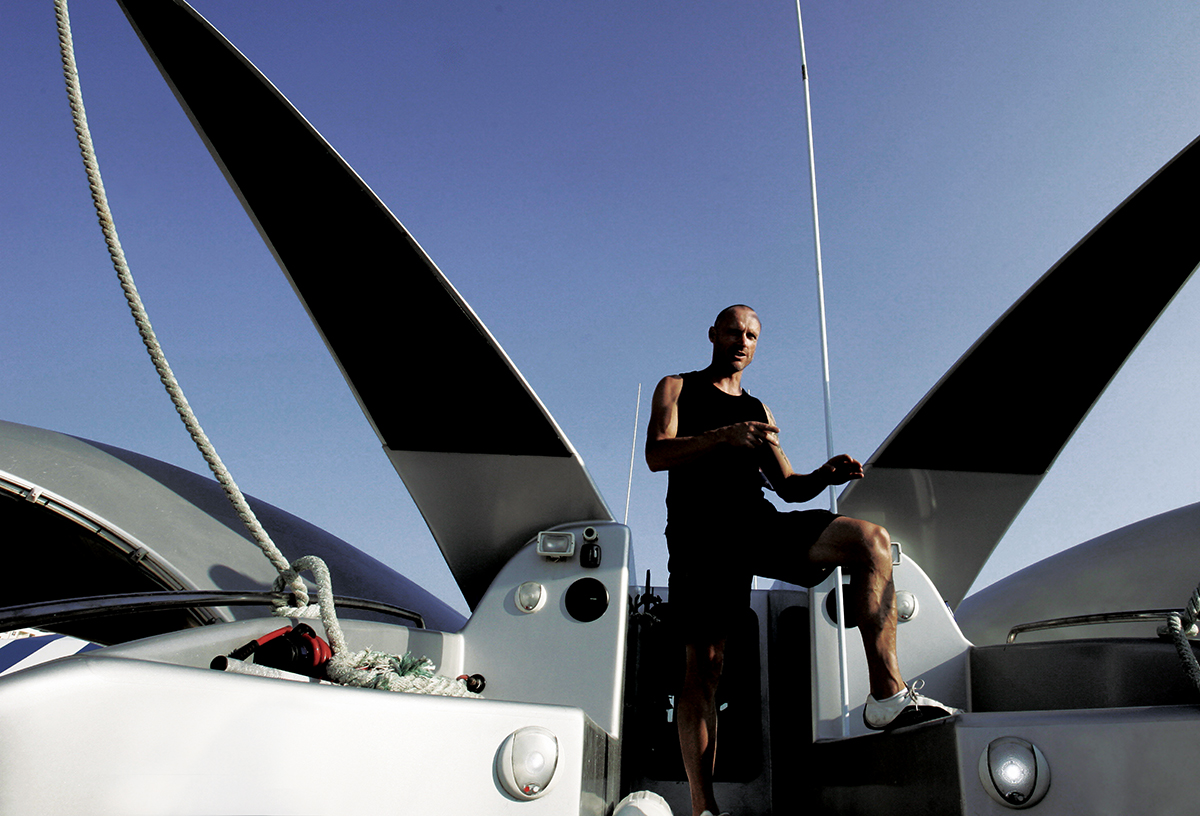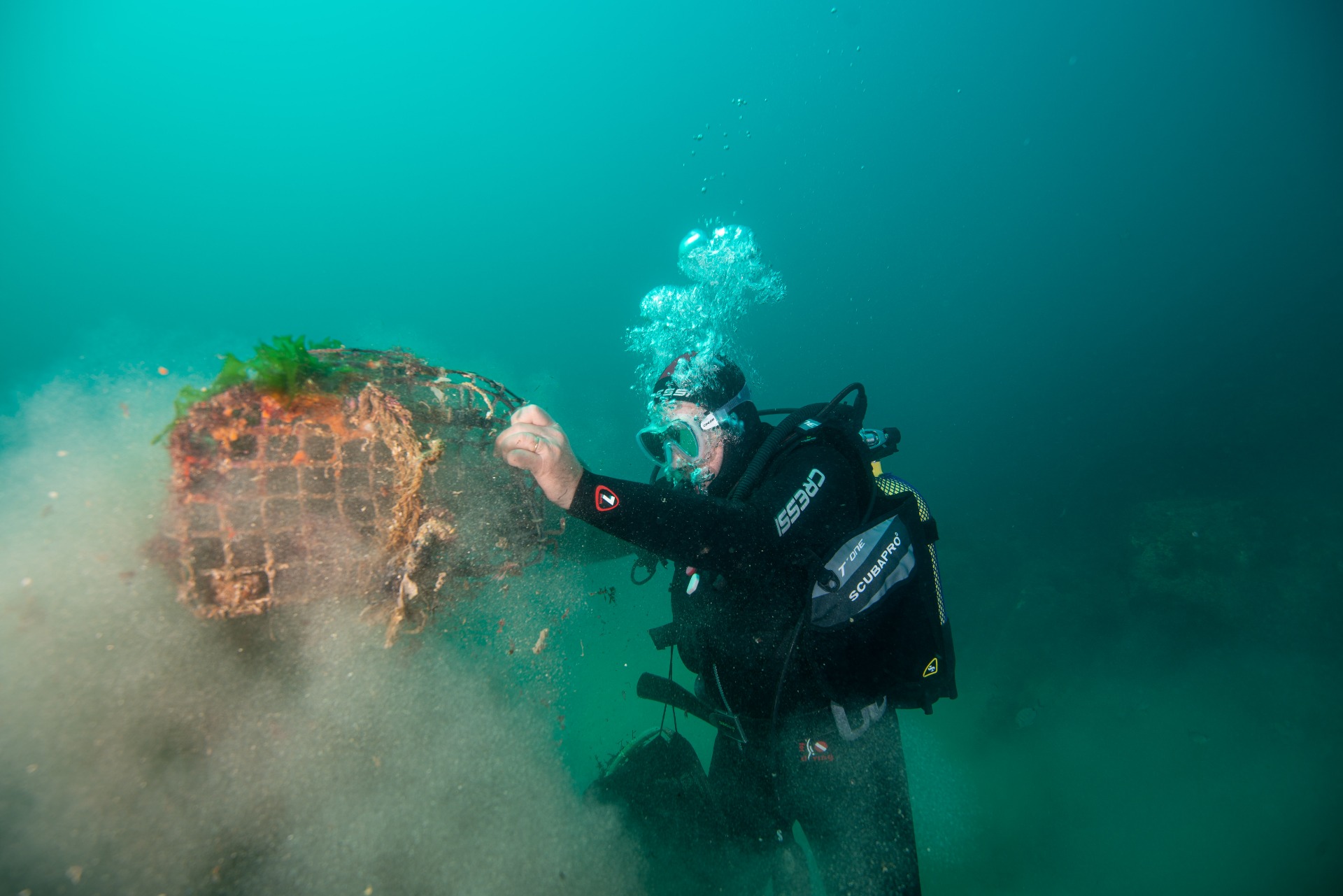
Heavy-duty Mission
MORE IS LESS
Dawn breaks over the town of Sesimbra, perched above the bay. From the harbour, the rising sun spreads a golden mantle over the turquoise waters, glistening in the breeze. It’s a glorious way to start the day, but deep down, 30 metres below this magical sight, danger lurks. A threat that needs to be addressed if changes are to be made on the surface.
On board the Santa Maria Manuela, the iconic tall ship built in 1937 and owned by the Jerónimo Martins Group since 2016, the first of 11 diving teams committed to cleaning the ocean bed is discussing the plan of action for the day. One of them, Sónia Sousa Ell, is wearing a t-shirt with the slogan: “Quando + 1= -1” (meaning “When +1 = -1”). It’s a teaser and the name of a marine literacy project she set up in 2018. The counter-intuitive maths expresses the project’s bid to help save the planet: “+1 = -1 because each piece of rubbish we remove from the sea bottom is one less that stays there.”
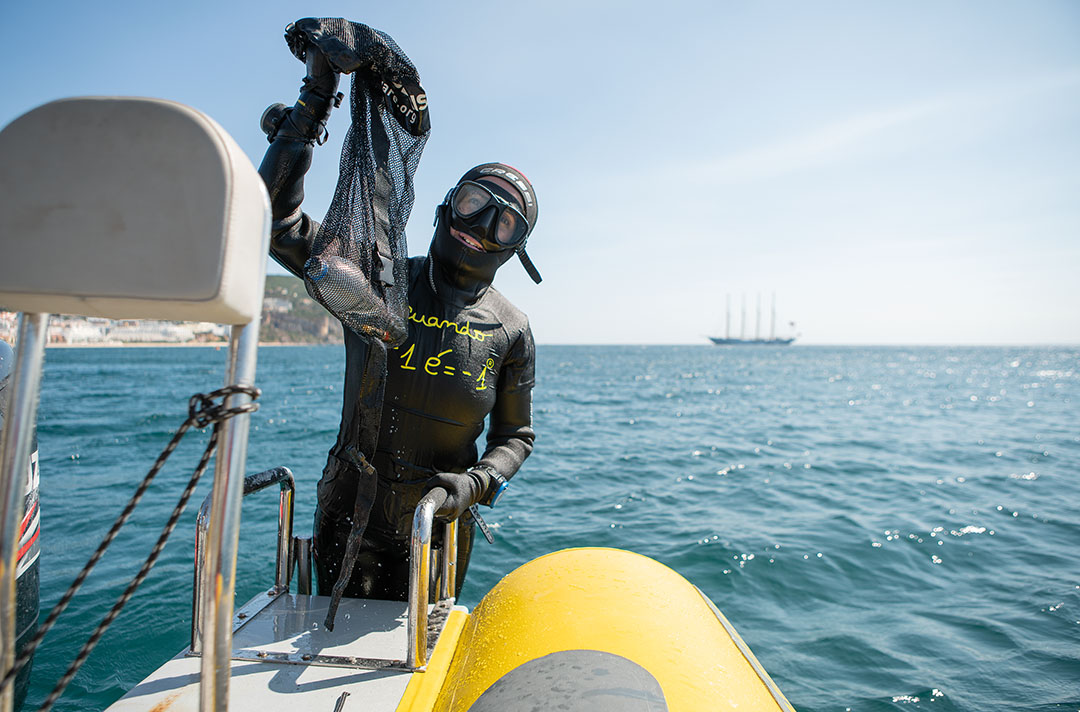
As an activist and diver, she saw International Coastal Cleanup Day (ICC) as a unique opportunity to combine her interests by taking action underwater: “I had this amazing dream, which was to clean up Portugal under the sea. I couldn’t do it alone, so I mentioned my idea to the Oceano Azul Foundation. And then we decided to combine the coastal clean-up, which is an annual campaign, with an undersea clean-up.” The result has been more than 30 group dives, providing more consistent figures on the rubbish retrieved: “Undersea clean-ups go on all year round, mostly undertaken by all of us, divers, who simply do this instinctively.
The question is, when we clean up rubbish, we sometimes report the figures, or what we’ve collected, to international platforms. But in Portugal we still don’t have these figures, which would be invaluable in looking at the problem and finding out how to solve it. We can go diving, and every time we do, we’re bound to find rubbish. But if we don’t deal with the problem on land, we’ll never get to the point where we don’t need to retrieve it from the sea.” In the inflatable dinghies, the divers are excited about discovering what’s concealed beneath the waves. It’s mostly fishing tackle and buoys, plastic bottles and cans. It all piles up as the divers return.
International Coastal Cleanup Day began in 1986 and has reached more than 150 countries.
Standing by to take the rubbish is the vintage cod-fishing schooner from the Portuguese White Fleet, helping out here for the first time. For Artur Ribeiro, the captain, with 20 years’ experience of life at sea, this is also a first. “We’ve done diving trips with the Oceano Azul Foundation in the Azores, but this is the first time on this specific job.” The bags that are piling up on the deck are a symptom of something he has sadly grown more familiar with.
“Over the years, sailors like us have been seeing more and more rubbish in the sea. We’d sail around and we’d always find something, mostly when we were near the coast. But now we find rubbish floating around farther away from land. And it’s not a nice thing to see when you’re sailing… and in the Santa Maria Manuela, we use the sails, and no engine, so we depend on the wind, and we sail past plastic boxes or flip-flops, whatever, it’s not a pleasant sight. So, it’s great to see this work being done.”
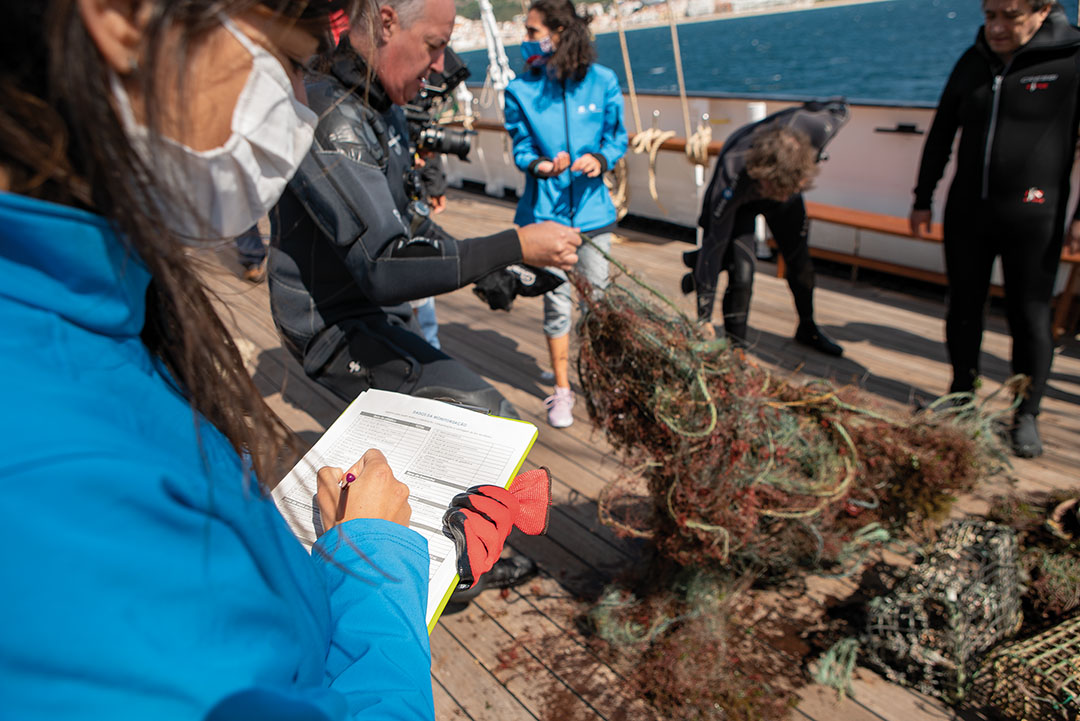
On deck, the rubbish is sorted and weighed. Mixed up with the rubbish or even caught up in cages, they discover pipefish (fish with an outer skeleton belonging to the seahorse family), daphnids and starfish. The creatures are immediately rescued and returned to their natural habitat. Other unusual objects are also found, such as Stanley knives.
The whole exercise prompts conflicting emotions: the sense of doing a good deed is countered by the feeling of powerlessness that comes from realising that these efforts are just like a drop in the ocean. “Sometimes the rubbish wins”, says Sónia. “I make a joke about it when I go to schools around the country. Sometimes it’s rubbish 1 – Sónia 0, and it remains underwater”. And today, sadly, it happened several times, for safety reasons. Or because the weight or volume is more than we can handle. But I’m happy about what we’ve been able to collect.”

FROM A WIDER POINT OF VIEW
In Portugal, International Coastal Cleanup Day has actually been stretched into a whole week. From 19 to 27 September, up and down mainland Portugal and in Madeira and the Azores, more than 170 Portuguese organisations and 3,600 volunteers responded to the call from the Oceano Azul Foundation to get involved in 166 clean-up operations, on shore and underwater. A total of 29 tonnes of maritime waste was collected, along 187 km of coastline. The CEO of the Oceano Azul Foundation, Tiago Pitta e Cunha, was pleased to have been challenged: “We’ve really stepped up the operation this year and we’ve almost doubled the number of clean-ups. And I think the lesson to be learned is that people actually want to change. People want to change and most of all they want to change how their societies relate to nature, the ocean and the planet.”

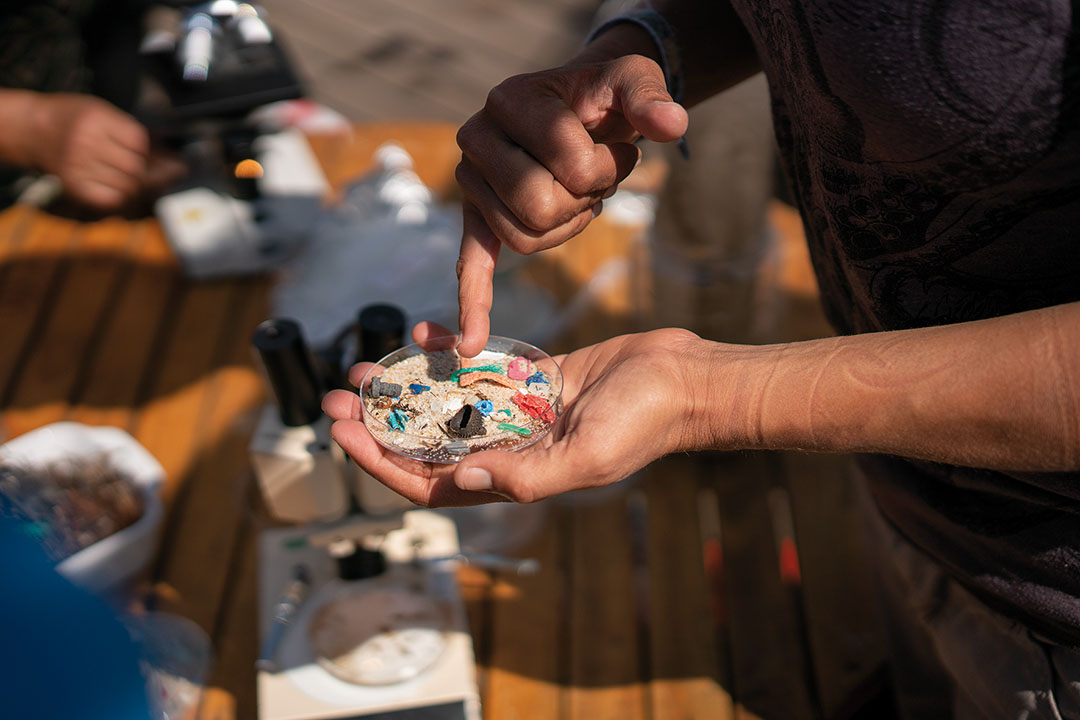
This is a movement to which he himself belongs, as a diver. I was surprised to see at the same time how marine life was living alongside all the waste we had to retrieve. And of course most of it is fishing tackle, nets, cages, traps, hooks and ropes. This is something that everyone knows is happening, but it has to be addressed.” It was in 2019 that, in line with its commitment to dealing with the sustainability of the planet, the Oceano Azul Foundation adopted the annual date set 30 years ago by Ocean Conservancy, recognised around the world as one of the leading organisations in the field of marine conservation. Close to a hundred countries have so far joined in the task of cleaning up their beaches. In the last four years alone, Portugal produced 1,090 tonnes of marine waste. 80% of this comes from activities on land.
“NEWFOUNDLAND”: FROM HISTORY TO FICTION
For five decades she was the flagship of the Portuguese fishing fleet, in the icy waters of Newfoundland and Greenland. Today, the Santa Maria Manuela is owned by the Jerónimo Martins Group and is used for ocean voyages and training at sea, as well as events – from conferences to film sets. Over four weeks, the ship was the main set for “Terra Nova”. This Portuguese film and TV series shows the daily life of families in fishing communities on the Portuguese coast in the 1930s. The motion picture, directed by Artur Ribeiro and based on “The Lugger”, a novel by Bernardo Santareno, was selected this year for the Soho International Film Festival. Bernardo Santareno is the pseudonym of António Martinho do Rosário, a Portuguese playwright who was born one hundred years ago this year.
